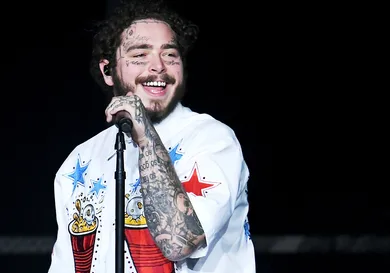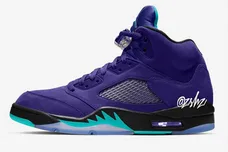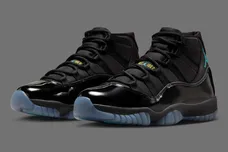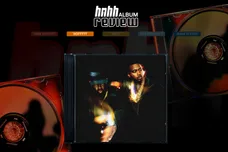The album has long been modern music’s benchmark. It’s a time-honored practice indebted to artistic statement and creative achievement, with the goal of delivering a comprehensive and immersive experience through individual sonic chapters. Prior to the advent of the streaming-verse, singles were a staple of the build-up to a release, serving as appetizers for what was to come. It was a tried-and-true recipe: pique the interest of listeners such that they’d be inclined to return to the table for the eventual main course.
Yet in 2019, the breakneck pace of the industry has come to dictate that singles be the focal point of the entire meal. “Traditionally, artists would go a long time between album projects, disappear and then come back as a big event,” explained Robbie Snow, SVP of Global Marketing for Hollywood Records, in an interview with Rolling Stone. “In this day and age, we try to keep things flowing so artists almost never go away. Fans want to be engaged constantly with artists that they like.”
The decline of the album as the music consumer’s go-to choice of format has been a slow and steady one, and is directly correlated to the rise of the single and, by association, playlists and compilations. Gone is the rollout cycle of old, replaced by the instant gratification and collective forgetfulness of attention economics. Now so more than ever, it feels as if quality is at odds with staying power, the latter of the two predominantly fed by quantity and publicity. Indeed, staying power no longer revolves around the idea of nurturing artistic longevity, but rather procuring a day-to-day occupancy in the mind of one’s audience. And what better way to drip-feed listeners than through a consistent and sustained diet of singles.
A resurgence of the industry’s single obsession has come at a time when dedicated music retail is drawing ever closer to the grave. Physical music, bound by its impracticality and technical limitations, has been unceremoniously ousted by the infinitely vast and (sometimes too) accommodating quarters of the internet. For artists looking to stay afloat amidst this muddy abstraction, encouraging engagement and algorithmic traction means delivering and delivering often, and singles represent an opportunity to do just that. They're a low-risk, high-reward means of experimentation, a sort of carrot on a stick that allows artists to both test the waters among more longtime loyalists and hook early nibblers who may be new to the pond. This “waterfall strategy,” in which artists can keep things moving by releasing songs on a whim, is highly customizable and has facilitated the digitalization of the single.
What with the price of consuming music having been drastically reduced thanks to streaming services and the enticement of free downloads, sharing culture has emerged as the modus operandi for a community of passive listeners looking for their next transient three-minute fix. It makes perfect sense when considered within the ease-of-use lens: why would the average music listener purchase an album for $12 when they can pay for a premium subscription for just $10 a month that gives them unlimited, uninterrupted access to an artist’s entire discography, chiefly their most popular tunes?
Taking it back for a moment to the year 2007, when a fan bought Graduation at their local music boutique or Best Buy, their purchase intent didn’t matter. Whether they saved up their money to obsessively listen to Kanye’s third studio effort from start to finish or found themselves habitually hitting rewind on “Can’t Tell Me Nothing,” the fact of the matter was that they still shelled out their hard-earned cash for the album itself. How they chose to listen after the fact was beside the point: the transaction was complete, the album “unit” was registered in the sales measurement, and the parties involved were cut a check and went on their merry ways.
Now, however, the success of certain tracks, particularly hit singles, is amplified on streaming platforms, in part because of how albums can be cherry-picked and subsequently divvied up by playlist “tastemakers” to support the preferences of listeners. Given the over-congested state of the entertainment landscape and the manner in which competing avenues are constantly vying for a slice of consumers’ time, it’s no wonder that many feel overwhelmed. Consumers like having options to choose from, but when faced with the insurmountable task of sorting through music’s endless all-you-can-eat buffet, it becomes a bit too much to stomach. The vast majority of casual music listeners would prefer to throw on blinders, hit play, and let algorithms do the heavy lifting in their dopamine reward centers.
Playlists have proven to be a workaround to this inundation conundrum, though often to the detriment of the artistic process. Per the newfangled rules of consumption, albums are released, rapidly digested and reviewed, diced up accordingly, and jettisoned within a week’s time. That said, if an artist plays their cards correctly, their singles persist, chewing up valuable time on playlists and streaming charts. Plus, the constant flush of new material keeps an artist’s profile fresh, with the latest flashy releases standing out at the top of their page. From an A&R perspective, having multiple singles in rotation on various playlists allows artists and their labels to gauge the response in real-time. Stretched thin across multiple musical touchpoints, artists have to more actively advocate for themselves in order to remain relevant from platform to platform, and infiltrating playlists has proven to be a worthwhile endeavor in this department. Take Spotify’s playlist submission tool, which pushes artists and their teams to make decisions about which tracks to put forward for playlist consideration.
Though spewing out singles is far from a foolproof strategy in that it can stunt the effect of the actual album drop, mustering promotional efforts around a track that “sticks” has the power to keep an artist’s name in the spotlight much longer than a slew of hopefuls strung together in album form. Hitting the nitro-boost at the right time with the right material means that many artists and labels are content to cut their losses and invest their energy in a single record in order to lure listeners, and rightfully so given the shortening attention spans of those they’re targeting. Assembling a full-length album is an expensive and time-consuming process that doesn’t yield all that much when weighed against the benefits (namely exposure) that come from establishing a commercial foothold and mainstream presence via singles.
Drake carrying all his awards for "Views" at the BMAs - David Becker/Getty Images
This is the defining transformation of music’s new era: signalling stream-ability through singles has come to supercede front-to-back replayability as it relates to the final product. Take Drake’s 20-track, 80-minute Views, which broke single week streaming records at the time of its release in 2016. Beyond its obvious (and quite savvy) “more-is-more” attempt to game the system, the structure of Views reveals an album that was not designed to be consumed in linear listens. Rather, it’s a reflection of a system that incentivizes the tacking on of songs like “Hotline Bling,” regardless if they’re a year-plus old or very loosely tied to the album’s conceptual construction. Views has racked up a massive number of streams as a result, even as the significantly varying song-to-song play counts speak to an album that isn’t being listened to from start to finish.
Views, whose bloated nature was replicated on quasi-playlist More Life and the double disc Scorpion, is indicative of a much larger trend that is unfolding in pop music. And with the rampant value being placed on the commercial prestige associated with No. 1 albums and gold and platinum plaques, it’s taken on a life of its own. The reality is that overlong albums suffering under the weight of filler can still prosper when buoyed by hit singles. Artists and their labels have come to realize that the money’s only in the hits that crack the charts, and their baser interests in profit have thus gone unchecked. And who can blame them: a single that’s been streamed 100 million times is a no-brainer pick over a combined handful of tracks with just a few million streams to their name. Artists are frequently berated for anemic first week tallies, when in truth “sales” as they were once defined are now a poor indicator of what’s actually taking place between the margins. Nowadays, cumulative album sales tend to be derived from one or two tracks, typically pre-released singles, that are performing well, while the more groundbreaking totals are reserved for established global superstars and top-tier zeitgeist purveyors such as Drake, Adele, Beyonce, and Post Malone.
Post Malone at the 61st annual Grammys - Frazer Harrison/Getty Images
For music artists in 2019, the only relevant metric is listenership: a song needs to be listened to on most streaming platforms for at least 30 seconds to trigger a payout. That means getting in, getting out, and ensuring that impatient listeners who can’t be bothered with long intros, outros, bridges, or beat drops hit the replay button at all costs. The Beatles front-loaded the catchy bits half a century ago, and today’s Billboard sluggers are choosing to do the same. Excluding Diplo’s contribution to the viral craze, none of the remixes of Lil Nas X’s “Old Town Road” crack three minutes, and the song’s hook, the selling point of any single worth its salt, kicks into gear before 15 seconds. Lil Pump’s mind-numbing “Gucci Gang,” one of the biggest hits of 2017, clocks in at just 2:04, while both Lizzo’s “Truth Hurts” and Billie Eilish’s “Bad Guy” hover around the industry-prescribed standard for those looking to break the bank. This tailored efficiency speaks to artists’ now frighteningly accurate ability to discern at what point in the song the listener is prone to hit skip, and if they'll be back for another helping down the line.
The music industry is in the midst of a major growth period: total revenues jumped 10 percent in 2018 to $4.6 billion, with streaming making up a whopping three-quarters of revenue, a chunk of the pie that will likely continue to balloon. How the album fits into this equation remains to be seen, especially now that singles define an artist’s career and trajectory more than a debut album. That’s not to say that albums will outright cease to exist in the coming years, or that the old approach is without merit; singles on their own admittedly don’t pack the same punch as a well-crafted album narrative in which all the pieces fit snugly together (see Kendrick Lamar's To Pimp a Butterfly for reference). But albums are growing progressively obsolete given the way that streaming service users at a mass market level tune in and tune out with each singles-sculpted playlist.
This begs the question: are add-water-and-stir disposable acts (and albums) a thing of the future? And from there, what kind of mileage can artists get out of bite-sized ingredients and outsourced mind share when it’s all said and done? It’s a double-edged sword that could either bring about more fluid diversity and widen the playing field for up-and-coming acts, or lead to further homogenization. Ultimately, what defines an artistic body of work will evolve as artists push the boundaries of music’s democratization.







